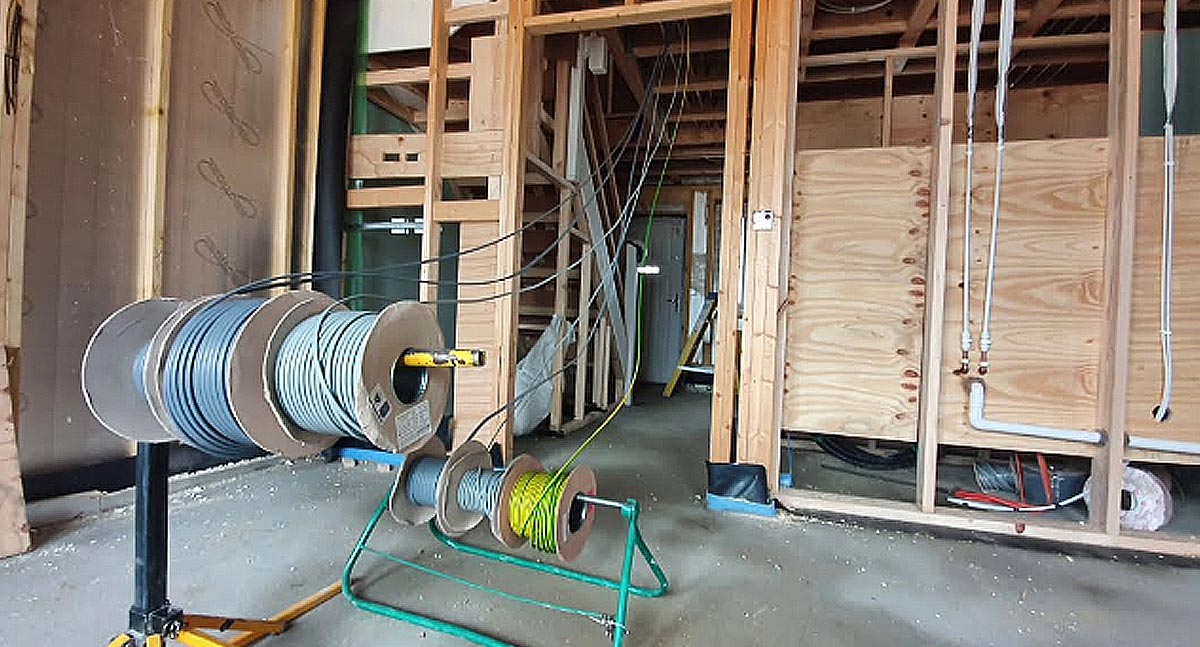Advanced BRE Automation Australia: Transforming Your Automation Needs
The Ultimate Overview to Electrical Installation: Tips and Methods for a Safe and Effective Home Electrical Wiring System
In the realm of home upkeep, few facets are as critical yet often forgotten as the electric circuitry system. By exploring the subtleties of electrical safety actions and energy-saving practices, this extensive guide will drop light on the details of home wiring, encouraging individuals to take cost of their house's electric facilities.
Recognizing Electric Safety And Security Measures
To make certain the security of both people and home, understanding and applying correct electric safety steps is vital in any home electrical wiring task. It is vital to carry out a complete examination of the electric system before beginning any kind of electrical wiring task to determine potential threats or problems that need to be resolved.
Additionally, utilizing the appropriate tools and tools is important for preserving security throughout electrical installments. Protected handwear covers, voltage testers, and protective glasses are a few of the standard safety and security equipment that ought to be worn to stop electrical shocks or crashes. It is additionally important to de-energize circuits before servicing them and to label all circuits and breakers plainly to stay clear of complication.

Essential Tools for Home Circuitry
Guaranteeing the correct implementation of electric safety and security steps in home circuitry projects includes using a certain collection of vital devices created to assist in the installation process effectively and safely. Some of the trick devices required for home electrical wiring projects include a voltage tester for examining real-time wires, cord pole dancers for getting rid of insulation from cables, a cord cutter for precisely reducing cables to length, a screwdriver set for safeguarding electric elements, electric tape for insulation and securing links, a cable ripper for removing wire sheathing, and a multimeter for gauging voltage, existing, and resistance.
Step-by-Step Electrical Installment Guide
Beginning an electric installment project requires meticulous preparation and adherence to safety standards. Before beginning any kind of job, ensure you have a detailed plan detailing the design of the electrical system, consisting of the placement of electrical outlets, switches, and fixtures. Think about the power demands of each device to determine the ideal cord gauge and circuit breaker dimensions.
The primary step in the installation procedure is to shut down the power supply to the location where you will certainly be functioning. Utilize a voltage tester to validate that the circuits are de-energized before go to this website touching any cables. Next, carefully get rid of existing components or outlets and separate the cables.
When setting up new wiring, run wires via walls and ceilings, protecting them in location with appropriate installations. Comply with local building codes and supplier guidelines for correct cable installment and links. BRE Electrical. Make certain to classify cords for simple recognition and future upkeep

Troubleshooting Common Circuitry Issues
Having actually completed the installment process as detailed in the previous subtopic, troubleshooting usual wiring problems is a crucial skill for making certain the safety and security and article source performance of your electrical system. One usual concern is a tripped breaker, commonly triggered by overloaded circuits or a brief circuit. To fix this, situate the breaker panel, determine the stumbled breaker by searching for the one not fully in the "on" placement, and reset it by turning it completely to "off" and after that back to "on." An additional widespread issue is a defective electrical outlet, characterized by no power or intermittent power supply. Ensure the outlet is not regulated by a switch, then make use of a voltage tester to examine for power. If there is no power, shut off the circuit, inspect the electrical wiring links for any type of loosened or damaged wires, and replace the outlet if required. Continually flickering lights can suggest loose circuitry links or an overloaded circuit. To address this, check and tighten up all cord links in the influenced components and switches and rearrange the tons on the circuit to stabilize the electric demand. On a regular basis examining and website link quickly dealing with these common circuitry concerns will preserve the security and efficiency of your home electrical system.
Tips for Energy-Efficient Electrical Systems
For optimum energy effectiveness in electric systems, carrying out wise practices and using energy-saving innovations is vital. One vital suggestion for achieving an energy-efficient electric system is to upgrade to LED illumination. Correct insulation and securing of home windows, doors, and electrical outlets can additionally avoid power loss, inevitably lowering the workload on electrical systems.
Final Thought
In verdict, carrying out proper security procedures, using essential tools, following a detailed installment overview, repairing usual problems, and integrating energy-efficient ideas are vital for a secure and reliable home circuitry system. By sticking to these practices, homeowners can make sure the durability and capability of their electric installments. It is essential to focus on security and efficiency when it comes to electrical job in order to protect against potential threats and to preserve a reliable electric system in the home.